Born on this day in 1821 in Anchay, France, Louis Vuitton established his now renowned eponymous label through a distinct focus on craftsmanship and design know-how. Born into a middle-class family of carpenters, farmers, and milliners, Vuitton gained a distinct sense of trade from an early age. At the age of 13, Vuitton left for Paris in order to escape the banalities of life in the countryside. Traveling on foot, the journey from the mountainous countryside to the industrial city took nearly two years.
In 1837, nearing the designer's 16th birthday, Vuitton began an apprenticeship with box-maker and milliner Monsieur Marechal. It was under Marechal that Vuitton would learn the immense craft of box making, specifically for the elite class who were the majority of Marechal's clients. Shortly after, Vuitton was hired to be the personal box and luggage maker of Empress Eugenie which allowed the designer to hone his skills and also gain the patronage of more elite clientele. 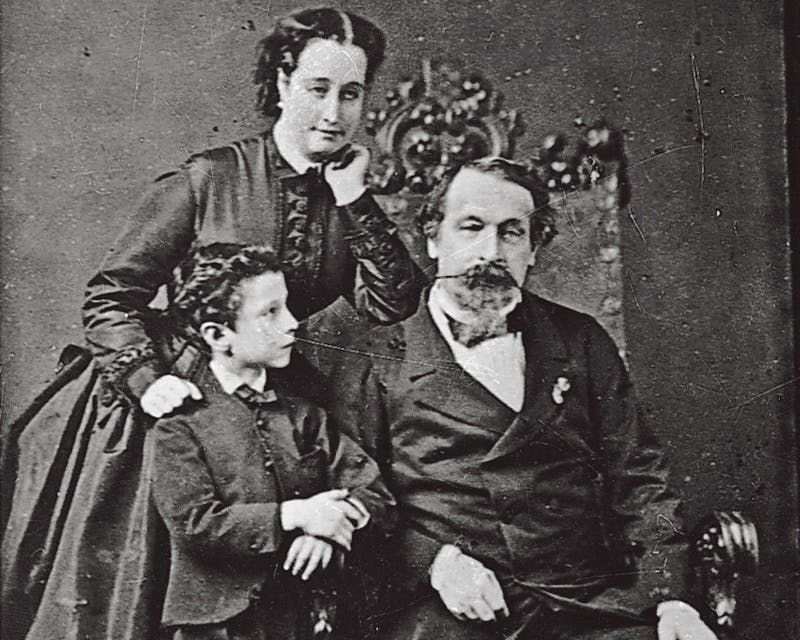
Vuitton with his wife Clemence-Emilie Parriaux and son George.
In 1854, the designer met Clemence-Emilie Parriaux who he would marry later in the year. It was also during this time that Vuitton established his first workshop in Paris that specialized in luxury trunks and boxes. Originally making his pieces in leather, the designer later transitioned to a coated canvas due to the material's ability to withstand water and stains. Vuitton's trunks also stood out from the usual Parisian dome-shaped luggage due to his focus on rectangular silhouettes which allowed the trunks to be easily stacked and transported during travel.
Louis Vuitton poses with factory workers, 1888.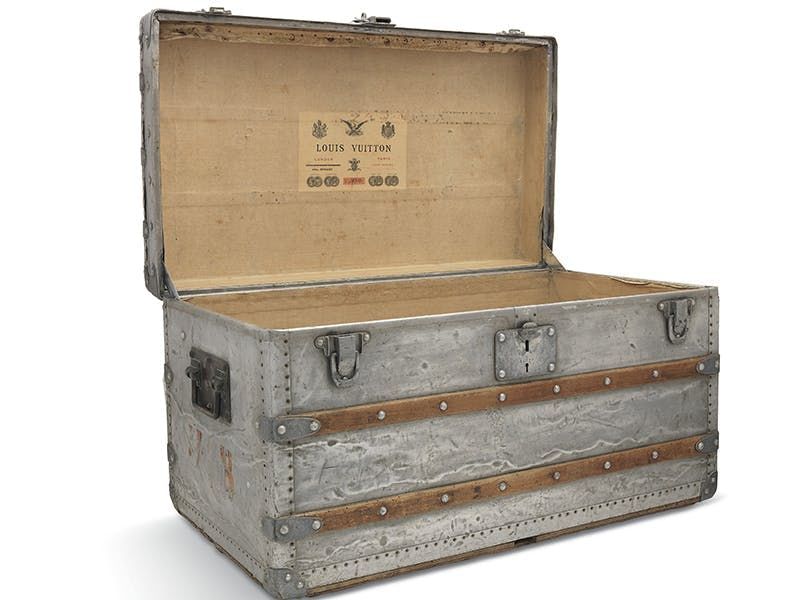
Louis Vuitton trunk, 1870s.
With the booming success of Vuitton's rectangular luggage, the designer opened a factory in Asnières, France where he began to fulfill orders for both Parisian bigshots and international nobility. In 1870, the outbreak of the Franco-Prussian war ultimately had an immense impact on Vuitton's booming brand. At the conclusion of the war, the brand's factory in Asnières was in ruins and the location in Paris was damaged.
Shortly after, Vuitton re-opened his store in Paris, this time at 1 Rue Scribe, located near a Jockey Club and other aristocratic hotspots. With a renewed focus on luxury, Vuitton began to introduce new signatures to his brand-new trunk designs and experimentations with silhouettes and canvas. In 1892, the designer would pass away, leaving behind his booming empire that would evolve into one of the most recognizable luxury brands in history.
Louis Vuitton advertisement, 1898. 
The luggage of Wallis Simpson, the Duchess of Windsor.
The now iconic monogram first appeared in 1896 and became a perennial favorite of those looking for a perfect balance of luxury and functionality. Working with the founder's initials, the "LV'' paired with angular shapes would instantly become one of the most sought after monograms of all time. Louis Vuitton's luggage and trunks were carried by the likes of Paul Poiret, the Rothschild family, and Wallis Simpson.
With the rise of jet set culture during the 1960s, Louis Vuitton trunks and luggage became a mainstay on the luxurious vacations and travels of society's elite. Venturing into other aspects of luxury goods, the brand unveiled a series of new styles-the Speedy, Noé, and Boite Chapeau. Thanks to the brand's top-notch branding and signature styles, Louis Vuitton became a must-have for the fashionable consumer.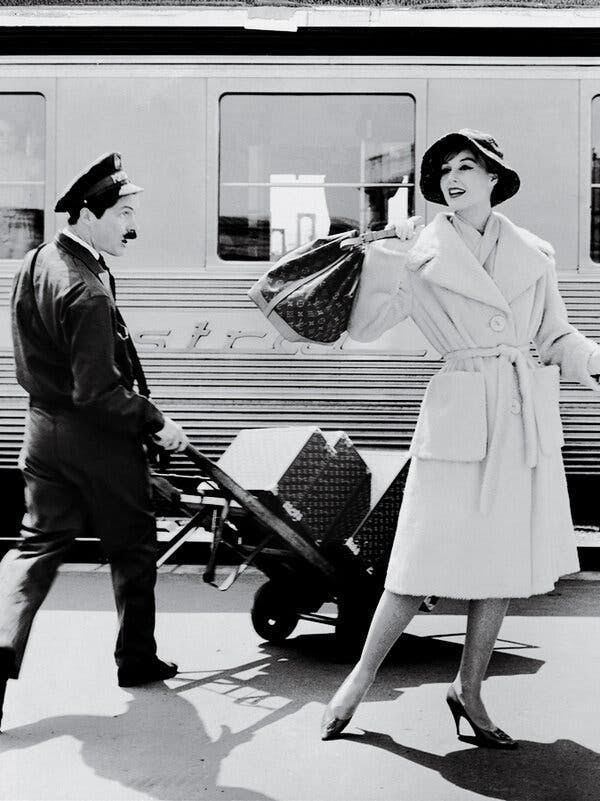
Model sports the "Noé" bag in a 1960s advertisement.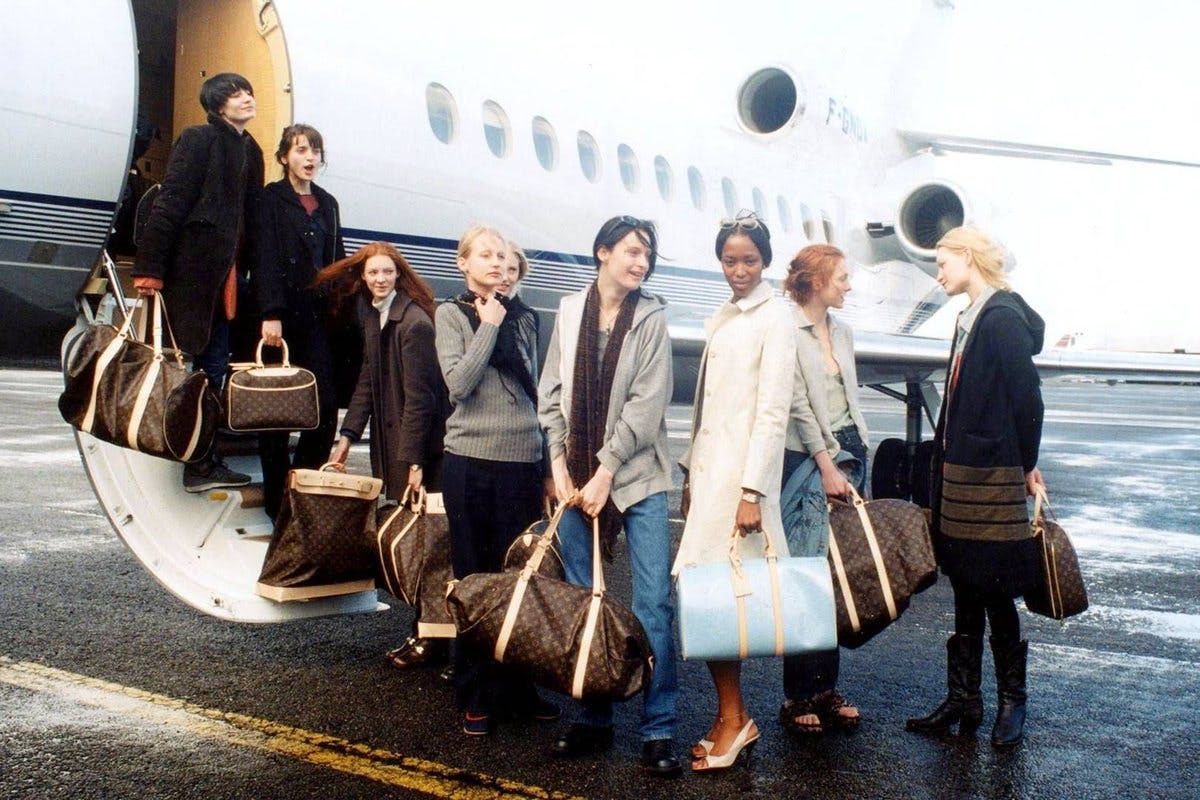
Models wear Louis Vuitton luggage, 1997.
Moving into the 21st century, Louis Vuitton began to expand into ready-to-wear thanks to the leadership of LVMH boss Bernard Arnault. Starting in 1997, Marc Jacobs helmed the heritage house with buzzy creations and memorable collaborations with Takashi Murakami, Richard Prince, and Yayoi Kusama. In 2013, the designer would leave Louis Vuitton, ushering in the forward-thinking vision of Creative Director Nicolas Ghesquière.
Under the vision of the French designer, the brand looked to its distinct archives while exploring the future. In 2018, Louis Vuitton named Virgil Abloh as the creative director of menswear-a buzzed about appointment that has seen Abloh cement himself in the world of luxury fashion. Born out of the humble origins of its founder's distinct skill, Louis Vuitton has evolved into a leading luxury house through an undying emphasis on sleek accessories and striking monogram.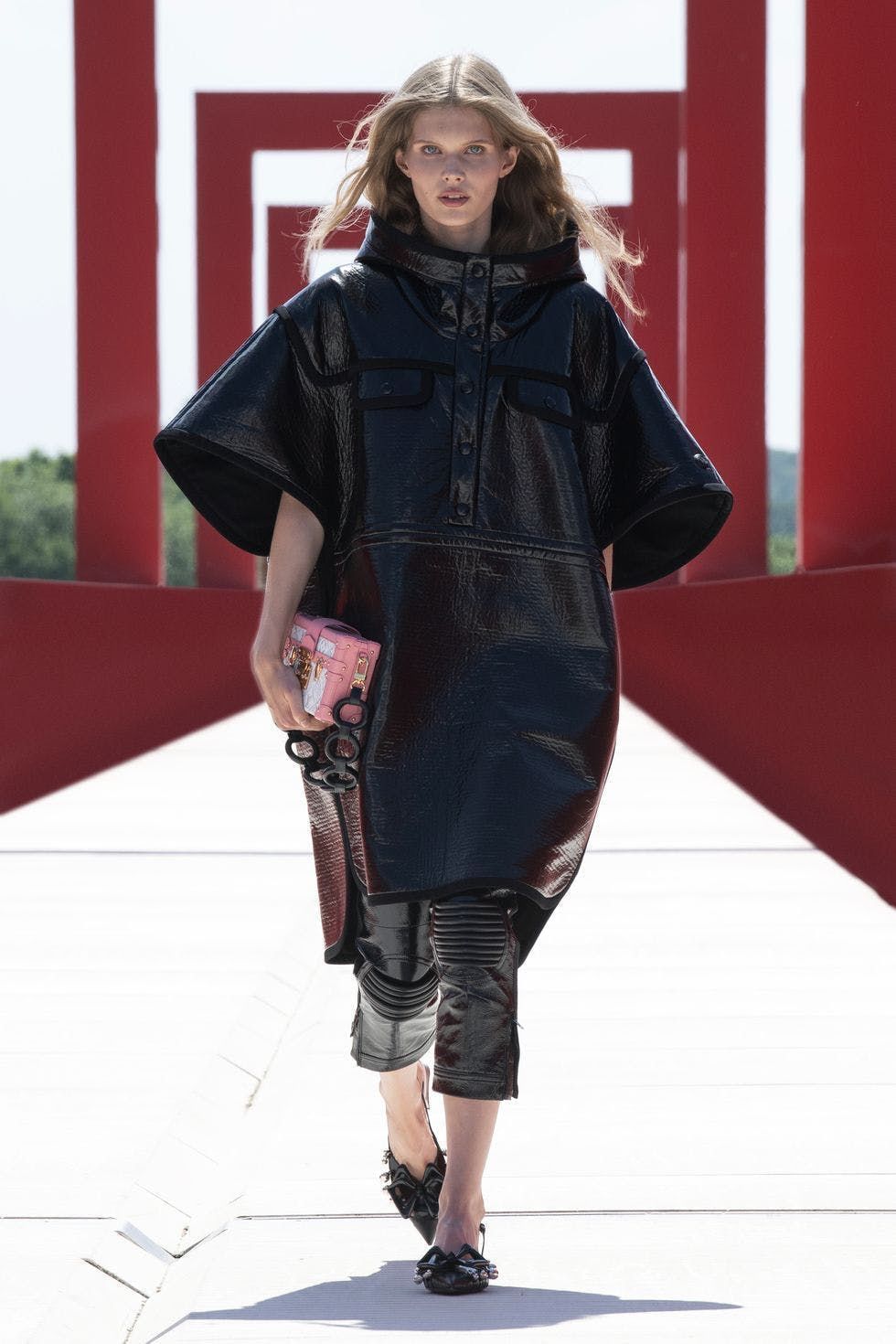
Louis Vuitton Cruise 2022.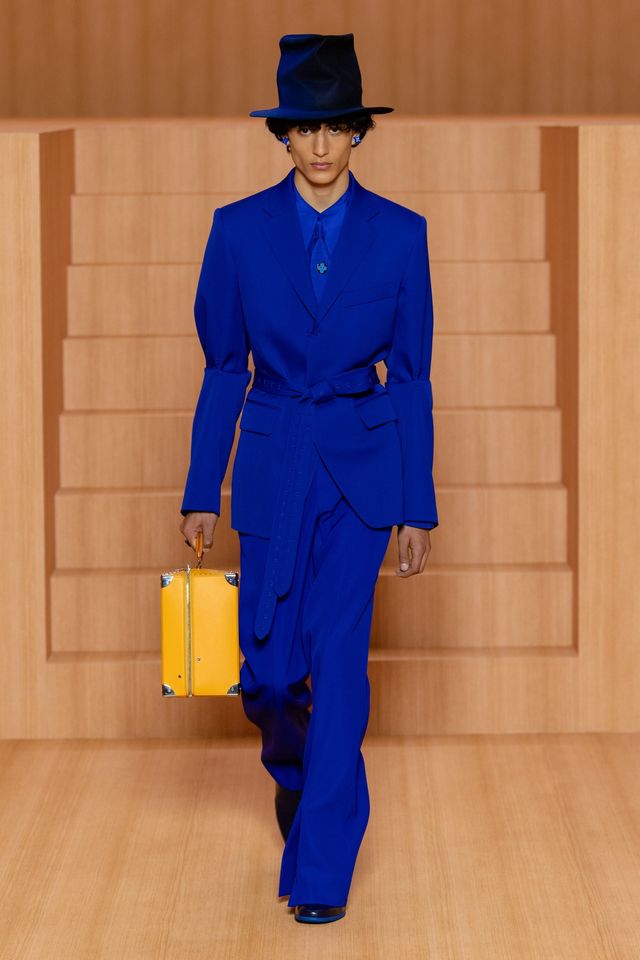
Louis Vuitton Men's Spring/Summer 2022.

Phil Oh’s Best Street Style Photos From the New York Fashion Week Spring 2023 Shows
This season New York Fashion Week has brought in a worldwide crowd of stars thanks to a packed season that even includes shows...












